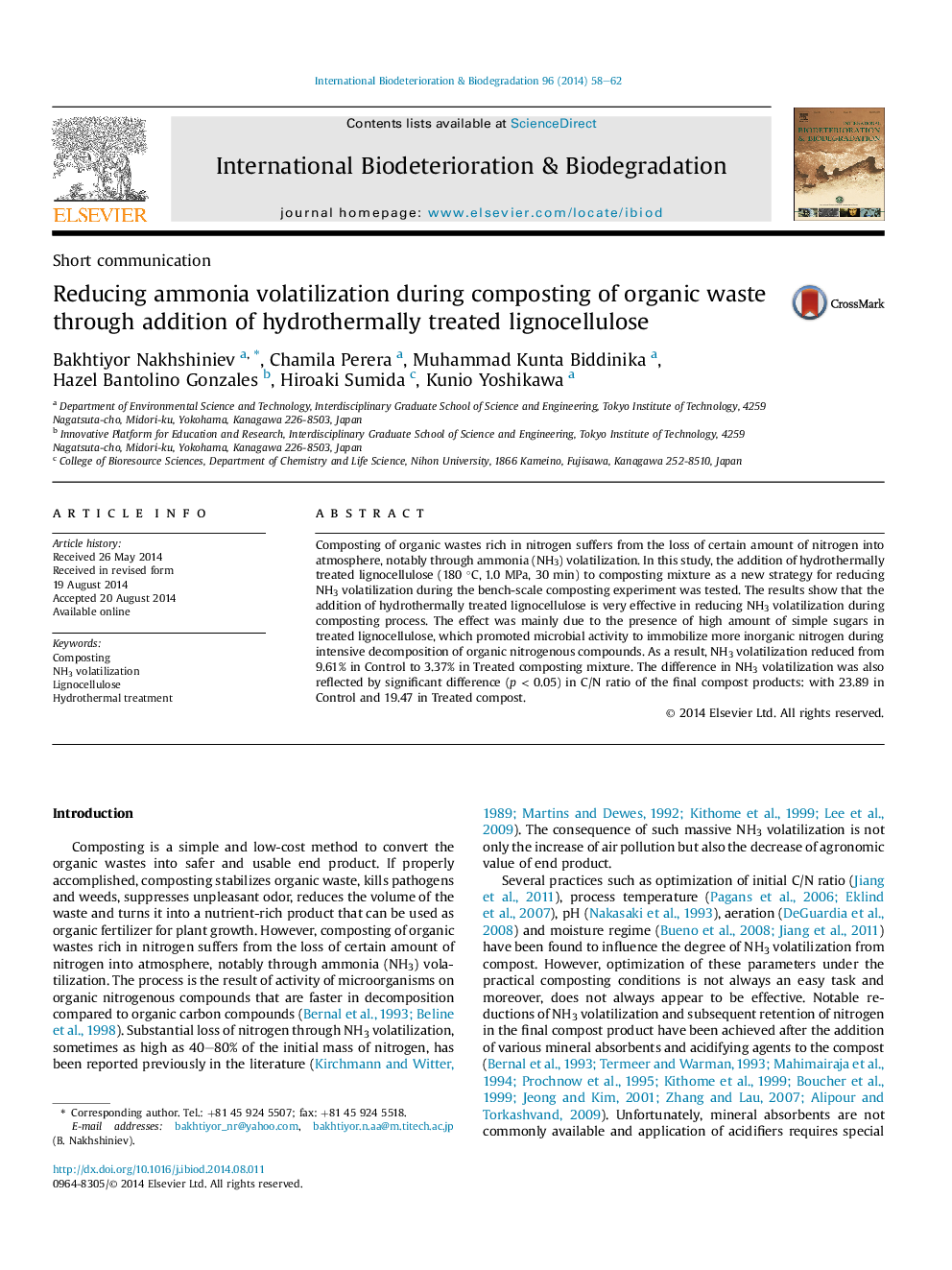| Article ID | Journal | Published Year | Pages | File Type |
|---|---|---|---|---|
| 6289220 | International Biodeterioration & Biodegradation | 2014 | 5 Pages |
Abstract
Composting of organic wastes rich in nitrogen suffers from the loss of certain amount of nitrogen into atmosphere, notably through ammonia (NH3) volatilization. In this study, the addition of hydrothermally treated lignocellulose (180 °C, 1.0 MPa, 30 min) to composting mixture as a new strategy for reducing NH3 volatilization during the bench-scale composting experiment was tested. The results show that the addition of hydrothermally treated lignocellulose is very effective in reducing NH3 volatilization during composting process. The effect was mainly due to the presence of high amount of simple sugars in treated lignocellulose, which promoted microbial activity to immobilize more inorganic nitrogen during intensive decomposition of organic nitrogenous compounds. As a result, NH3 volatilization reduced from 9.61% in Control to 3.37% in Treated composting mixture. The difference in NH3 volatilization was also reflected by significant difference (p < 0.05) in C/N ratio of the final compost products: with 23.89 in Control and 19.47 in Treated compost.
Related Topics
Life Sciences
Environmental Science
Environmental Science (General)
Authors
Bakhtiyor Nakhshiniev, Chamila Perera, Muhammad Kunta Biddinika, Hazel Bantolino Gonzales, Hiroaki Sumida, Kunio Yoshikawa,
